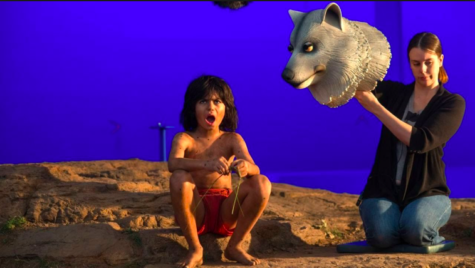
Neel Sethi on set for The Jungle Book
For those who work in the theatre, the idea of defending the term “live action” would seem an unnecessary task. But as movie marketers, abetted uncritically by the entertainment press, seem determined to diminish the concept, it appears that a brief primer is warranted.

Christopher Reeve as Superman
Live-action has, for many years, been a term reserved for that which actually occurs in real life, that is to say the activities of humans (and other animals). Whether performed on stage or captured on a camera, real people have been the central tenet of live action. In the theatre, while everything that surrounds people on a stage is by necessity a simulacrum of reality (and sometimes not even that), the presence of the actor grounds theatre in its “liveness.” The same has held true for most movies, even ones in which human action is assisted by tricks and tools (Superman flying; Jeff Goldblum transmogrifying into Brundlefly). Animated films were those which were understood to be drawn; in early years this was often quite rudimentary, and now it has become quite sophisticated, to the point that it’s becoming increasingly difficult to know where reality ends and digital imagery begins.

The Jungle Book (2016)
Why the compulsion to spell this out? Because of a series of films being released and planned by Disney, in particular. Following on their newest version of The Jungle Book, in which the only human actor – excluding voice actors – was the child playing Mowgli and as the newest version of the musical Beauty and the Beast approaches, Disney has announced what was widely described as a live-action version of The Lion King. With Donald Glover and James Earl Jones touted as starring, the latter “reprising” his role, the description of the film as live-action permeated the press, including CNN, Variety, Entertainment Weekly, BuzzFeed, Los Angeles Times and Time magazine, to name but a few. Even theatre-centric outlets like Theatremania and Playbill parroted this language.
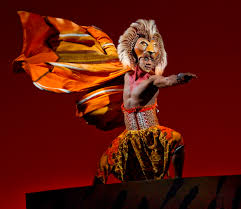
The Lion King on stage
While I am not privy to the conceptual work in connection with new The Lion King, I am prepared to guess that we will not see James Earl Jones in a lion suit ruling over an African savannah. What we will most likely get is a reasonably photorealistic lion with Jones’s magnificent voice. Perhaps motion capture will be used to allow Jones’s and Glover’s facial expressions to be mirrored in their semi-anthropomorphized state, though at age 86, I doubt Jones will be providing the sort of full-body motion capture that we know from the work of Andy Serkis. There has been a live-action Lion King for 20 years, by the way, staged by Julie Taymor.

Disney’s Alice in the Wooly West (1926)
Live action and animation have been blended virtually since the start of film. Walt Disney’s earliest success came with a series of short “Alice” films in which a real girl undertook adventures in animated worlds, though no one would have confused what was real and what was drawn. Over the years we’ve seen animated characters in largely live action films (from Gene Kelly dancing with Jerry the Mouse, Don Knotts submerged as Mr. Limpet, and certainly Who Framed Roger Rabbit, the apotheosis of this technique). Most of the Marvel superhero films since X-Men have made extensive use of animated settings, with actors shot on greenscreen and surroundings added later – and when we see Spider-Man swinging through Manhattan, we’re not watching Tobey Maguire or Andrew Garfield in advanced rigging, but rather an animated figure in both filmed and simulated settings.
One need only look at the Motion Picture Academy’s science and technical awards to understand how important this sophisticated animation is to the field. There were certificates described as follows: “The Viper camera enabled frame-based logarithmic encoding, which provided uncompressed camera output suitable for importing into existing digital intermediate workflows” and “Meander’s innovative curve-rendering method faithfully captures the artist’s intent, resulting in a significant improvement in creative communication throughout the production pipeline.” There were three separate honors for facial capture systems.
None of this is meant to diminish the films that employ these techniques or devalue them as entertainment. But as we reach a point where nothing onscreen ever existed anywhere but within computers as a massive series of 0s and 1s, it’s time to fight for the preservation of “live-action” as being something that retains the human, the biological, the corporeal. This is akin to the Champagne region of France wanting to insure that only sparkling wines made there can be called champagne.

Kong: Skull Island
The Jungle Book may have looked fairly real (perhaps even a hyper-realism), but unless The Lion King will be employing a wide range of well-trained, stunningly collegial bunch of wild animals whose mouths are animated (a la Babe, the sheep pig), then it’s time the entertainment media stop playing into this live action narrative. After all, no one ever pretended that King Kong or Bruce the Shark in Jaws were real, but they were grounded in the physical world (often by the limitations of technology), whereas now Kong is a highly sophisticated piece of digital animation in the new Kong: Skull Island, and crappily rendered sharks fall from the sky every summer on SyFy.
It’s especially important for theatre that this distinction be made, because if people come to accept and even believe that what they’re seeing on screen is reality, how can theatre compete without giving itself over to holograms? Mark my words. It’s coming. But for now, let’s hold on to the idea that live action still shows us beings that draw breath, not just in body or in voice, but in complete form. The movies need to come up with their own term. Let’s fight for live action as a brand. Because that’s what theatre is all about.
Aside from being the month of copious pumpkin flavored foodstuffs, October also brings two perennial theatrical top ten lists that are worthy of note: American Theatre magazine’s list of the most produced plays in Theatre Communications Group theatres for the coming season and Dramatics magazine’s lists of the most produced plays, musicals and one-acts in high school theatre for the prior year. They both say a great deal about the state of theatre in their respective spheres of production, both by what’s listed explicitly, as well as by what doesn’t appear.
In the broadest sense, both lists are startlingly predictable, although for different reasons. If you happen to find a bookie willing to give you odds on predicting the lists, here’s the trick for each: for the American Theatre list, bet heavily on plays which appeared on Broadway, or had acclaimed Off-Broadway runs, in the past year or two. For the Dramatics list, bet heavily on the plays that appeared on the prior year’s list.
But in the interest of learning, let’s unpack each list not quite so reductively.
American Theatre
 As I’ve written in the past, what happens in New York theatre is a superb predictor of what will happen in regional theatre in the coming seasons, especially when it comes to plays. Any play that makes it to Broadway, or gets a great New York Times review, is going to grab the attention of regional producers. Throw in Tony nominations, let alone a Tony win – or the Pulitzer – and those are the plays that will quickly crop up on regional theatre schedules.
As I’ve written in the past, what happens in New York theatre is a superb predictor of what will happen in regional theatre in the coming seasons, especially when it comes to plays. Any play that makes it to Broadway, or gets a great New York Times review, is going to grab the attention of regional producers. Throw in Tony nominations, let alone a Tony win – or the Pulitzer – and those are the plays that will quickly crop up on regional theatre schedules.
Anyone who follows the pattern of production would have easily guessed that Christopher Durang’s Vanya and Sonia and Masha and Spike would proliferate this year, being a thoughtful, literary based comedy with a cast of only six. That American Theatre lists 27 productions doesn’t even take into account the 11 theatres that did the show in 2013-14, and certainly there are non-TCG theatres which are doing the show as well. It’s no surprise that Durang has said he made more money this past year than in any other year of his career; it’s a shame that financial success has taken so long for such a prodigiously gifted writer and teacher.
In general, shows on the American Theatre list have about a three year stay, typically peaking in their second year on the list, but this can vary depending upon when titles are released by licensing houses and agents to regional theatres. 25 years ago (and more significantly years before that) theatres might have had to compete with commercial tours, but play tours are exceedingly rare birds these days, if not extinct.
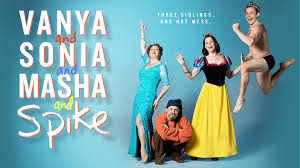 Perhaps this rush to the familiar and popular and NYC-annointed is disheartening, but it’s worth observing that the American Theatre list notes how many productions each title gets, and that after the first couple of slots, we’re usually looking at plays that are getting 7 or 8 productions in a given season, across TCG’s current universe of 474 member companies (404 of which were included in this year’s figures). Since the magazine notes a universe of 1,876 productions, suddenly 27 stagings of a single show doesn’t seem so dominant after all. Granted, TCG drops Shakespeare from their calculations, but even he only counted for 77 productions of all of his plays across this field. So reading between the lines, the American Theatre list suggests there’s very little unanimity about what’s done at TCG member theatres in any given year, a less quantifiable achievement but an important one.
Perhaps this rush to the familiar and popular and NYC-annointed is disheartening, but it’s worth observing that the American Theatre list notes how many productions each title gets, and that after the first couple of slots, we’re usually looking at plays that are getting 7 or 8 productions in a given season, across TCG’s current universe of 474 member companies (404 of which were included in this year’s figures). Since the magazine notes a universe of 1,876 productions, suddenly 27 stagings of a single show doesn’t seem so dominant after all. Granted, TCG drops Shakespeare from their calculations, but even he only counted for 77 productions of all of his plays across this field. So reading between the lines, the American Theatre list suggests there’s very little unanimity about what’s done at TCG member theatres in any given year, a less quantifiable achievement but an important one.
Dramatics
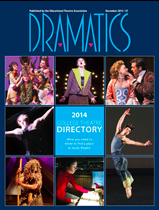 While titles come and go on the American Theatre list, stasis is the best word to describe the lists of most produced high school plays (it’s somewhat less true for musicals). Nine of the plays on the 2014 list were on the 2013 list; 2014 was topped by John Cariani’s Almost, Maine, followed by A Midsummer Night’s Dream and the two titles were in reverse order the prior year. The other duplicated titles were Our Town, 12 Angry Men (Jurors), You Can’t Take It With You, Romeo and Juliet, The Crucible, Harvey and The Importance of Being Earnest.
While titles come and go on the American Theatre list, stasis is the best word to describe the lists of most produced high school plays (it’s somewhat less true for musicals). Nine of the plays on the 2014 list were on the 2013 list; 2014 was topped by John Cariani’s Almost, Maine, followed by A Midsummer Night’s Dream and the two titles were in reverse order the prior year. The other duplicated titles were Our Town, 12 Angry Men (Jurors), You Can’t Take It With You, Romeo and Juliet, The Crucible, Harvey and The Importance of Being Earnest.
Like the American Theatre list, the Dramatics survey doesn’t cover the entirety of high school theatre production; only those schools that are members of the Educational Theatre Association’s International Thespian Society have the opportunity to participate, representing more than 4,000 high schools out of a universe of 28,500 public, private and parochial secondary schools in the country. Unlike the Dramatics list, there are no hard numbers about how many productions each show receives, so one can only judge relative popularity.
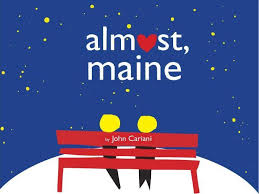 Almost, Maine’s swift ascension to the top rungs of the list is extraordinary, but it’s due in no small part to its construction as a series of thematically linked scenes, originally played by just four actors but easily expandable for casts where actor salaries aren’t an issue. Looking at recent American Theatre lists, they tend to be topped by plays with small casts (Venus in Fur, Red, Good People and The 39 Steps), while the Dramatics list is the reverse, with larger cast plays dominating, in order to be inclusive of more students (though paling next to musicals where casts in school shows might expand to 50 or more).
Almost, Maine’s swift ascension to the top rungs of the list is extraordinary, but it’s due in no small part to its construction as a series of thematically linked scenes, originally played by just four actors but easily expandable for casts where actor salaries aren’t an issue. Looking at recent American Theatre lists, they tend to be topped by plays with small casts (Venus in Fur, Red, Good People and The 39 Steps), while the Dramatics list is the reverse, with larger cast plays dominating, in order to be inclusive of more students (though paling next to musicals where casts in school shows might expand to 50 or more).
The most important trend on the Dramatics list (which has been produced since 1938) is the lack of trends. Though a full assessment of the history of top high school plays would take considerable effort, it’s worth noting that Our Town was on the list not only in 2014 and 2013, but also in 2009, 1999 and 1989; the same is true for You Can’t Take It With You. Other frequently appearing titles are Arsenic and Old Lace, various adaptations of Alice in Wonderland, Harvey, and The Miracle Worker.
No doubt the lack of newer plays with large casts is a significant reason why older classic tend to rule this list; certainly the classic nature of these works and their relative lack of controversial elements play into it as well. But as I watched Sheri Wilner’s play Kingdom City at the La Jolla Playhouse a few weeks ago, in which a drama director is compelled to choose a play from the Dramatics list, I wondered: is the list self-perpetuating? Are there numerous schools that seek what’s mainstream and accepted at other schools, and so do the same plays propagate themselves because administrators see the Dramatics list as having an implied educational seal of approval?
That may well be, and if it’s true, it’s an unfortunate side effect of a quantitative survey. But it’s also worth noting that many of these plays, vintage though they may be, have common themes, chief among them exhortations to march to your own drummer, to matter how out of step you may be to the conventional wisdom. They may be artistic expressions from other eras about the importance of individuality, but in the hands of teachers thinking about more than just placating parents, they are also opportunities to celebrate those among us who may seem different or unique, and for fighting for what you believe in against prevailing sentiment or structures.
* * *
Looking at musicals on the American Theatre list is a challenge, because their list is an aggregate of plays and musicals, and while many regional companies now do a musical or two, it’s much harder for any groundswell to emerge. In the last five years, only three musicals have made it onto the TCG lists, each for one year only: Into The Woods, Spring Awakening and The 25th Annual Putnam County Spelling Bee. That doesn’t mean there’s a dearth of musical production, it simply shows that the work is being done by companies outside of the TCG universe.
 Musicals are of course a staple of high school theatre, but the top ten lists from Dramatics are somewhat more fluid. While staples like Guys and Dolls, Grease, Once Upon a Mattress, You’re A Good Man Charlie Brown and Little Shop of Horrors maintain their presence, newer musicals arrive every year or two, with works like Seussical, Legally Blonde, Spelling Bee, and Thoroughly Modern Millie appearing frequently in recent years. At the peak spot, after a six-year run, Beauty and the Beast was bested this year by Shrek; as with professional companies, when popular new works are released into the market, they quickly rise to the top. How long they’ll stay is anyone’s guess, but I have little doubt that we’ll one day see Aladdin and Wicked settle in for long tenures.
Musicals are of course a staple of high school theatre, but the top ten lists from Dramatics are somewhat more fluid. While staples like Guys and Dolls, Grease, Once Upon a Mattress, You’re A Good Man Charlie Brown and Little Shop of Horrors maintain their presence, newer musicals arrive every year or two, with works like Seussical, Legally Blonde, Spelling Bee, and Thoroughly Modern Millie appearing frequently in recent years. At the peak spot, after a six-year run, Beauty and the Beast was bested this year by Shrek; as with professional companies, when popular new works are released into the market, they quickly rise to the top. How long they’ll stay is anyone’s guess, but I have little doubt that we’ll one day see Aladdin and Wicked settle in for long tenures.
* * *
When I looked at both the American Theatre and Dramatics lists over a span of time, the distinct predictability of each was troubling. Coming out when they do, before most theatrical production for the next theatre season is set, I’d like to see them looked at not as any manner of affirmation, but as a challenge – whether to professional companies or school schedules. I admire and enjoy the plays that are listed here, and nothing herein should be construed as critical of any of these shows; audiences around the country deserve the opportunity to see them. While I do have the benefit of living in New York and seeing most of these popular shows there, I must confess that I am most intrigued by the theatre companies and school groups that might just say to themselves, ‘Let’s not do the shows, or too many of the shows, that appear on these lists. Let’s find something else.’ Those plays may never appear as part of any aggregation, but I suspect the groups’ work will be all the more interesting for it, benefiting both artists and audiences.














